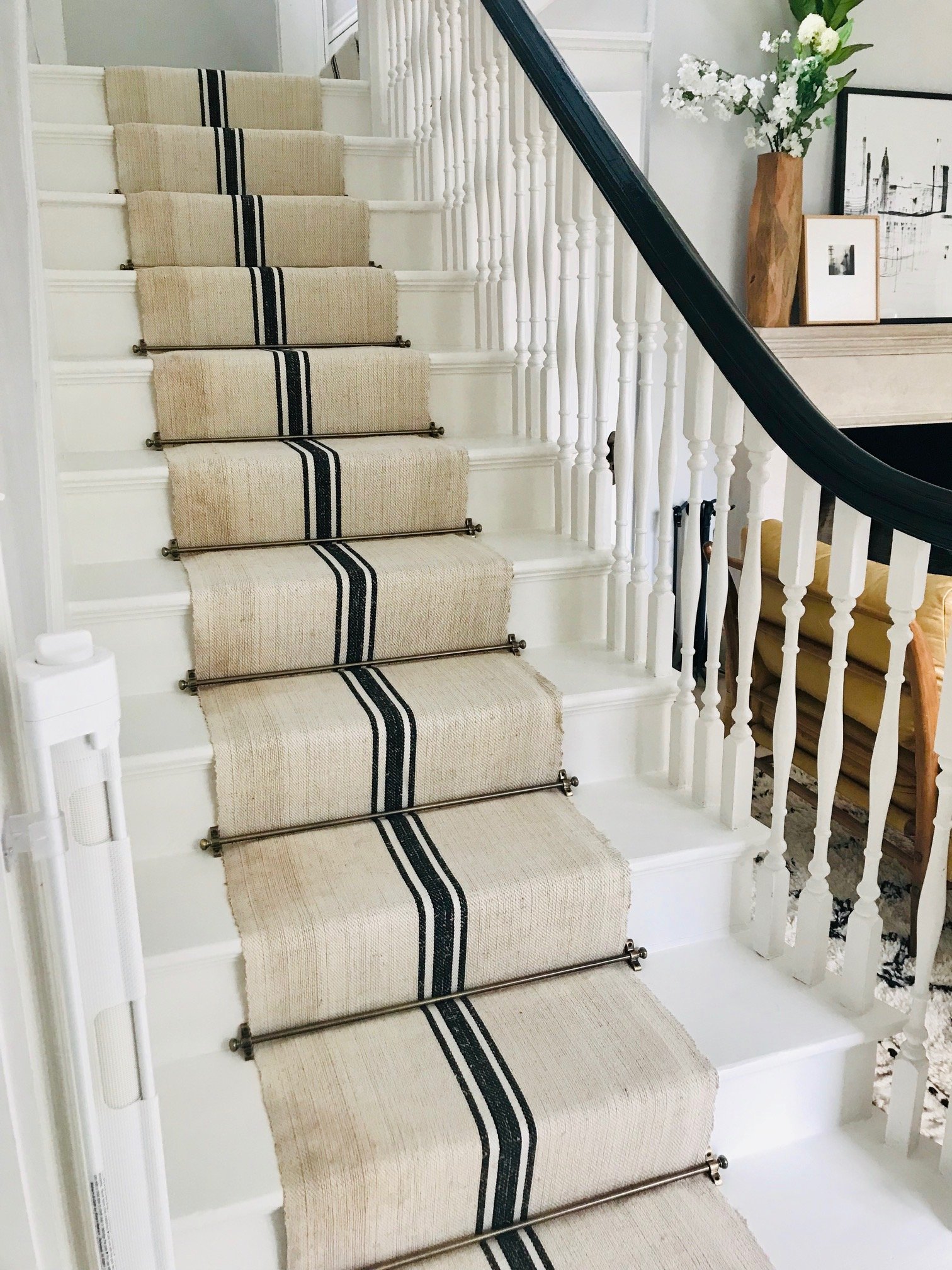Stair Runners and Rag Rugs
These long linen bolts are made from heavy hemp or flax yarn and are so durable they can be used with beautiful effect as rugs or stair runners. European rag rugs also add a wonderful splash of color, and each length is handwoven and unique!
A Brief History of These Textiles
My collection of heavy linen bolts range in age from the early 19th to the early 20th century. Linen bolts like these were painstakingly handwoven into long lengths. The weavers of yesterday would spend their evenings weaving these amazing rolls of linen. It took the average person one night to weave 60 centimeters (24 inches) of this lovely fabric. This linen would then be used to make heavy grain sacks. Hemp is one of the most durable fibers known to man. The stripes acted as the signature of the farmer, so when they brought their grain to the mill their sacks could be distinguished from the grain sacks of everyone else. This is why you will find such a wide variety of stripes!
Rag rugs are one of my favorite forms of recycling! Rather than compost old worn out clothing or bedding, these textiles were hand loomed into colorful long carpets with often stunning patterns! On your next museum visit, keep an eye out for rag rugs in European paintings dating from the late 19th and early 20th century. Rag rugs are still being made today.
Qualities of These Textiles
These heavy linens vary slightly in weight from each length but mainly they are distinguished by their stripes and the weave and tone of the linen. These bolts can have a plain, twill or herringbone weave. Each of these weaves lends a different textural look to the fabric. Typically the bolts we find range in length from 3 yards to 20 yards, but occasionally we find even longer intact bolts! The same goes for our rag rugs which vary in tones, patterns and materials.
Uses
Other than using these pieces as hall or stair runners, this heavy fabric can be used for decorative table runners and decorative pillows. Long lengths of these textiles can be sewn together to make area rugs, and they could even make fabulous wall paper panels! Stair runner instructions accompany the description of each of these items on my online stores.
INSTALLING YOUR STAIR RUNNER
To measure your stairs, the easiest way to do it is to measure the depth of each tread and riser in your staircase, add them together, then multiply by the number of stairs. You can also run a string or something similar along the surface of where your runner will lay, then measure the length of the string. We recommend adding a bit extra just to ensure you have enough!
Fitting is usually done with a carpet pad, felt underlay, or something similar (to pad and provide some grip between the runner and the stair) and then tacked, nailed or stapled to the stairs. Stair rods can also be used for a different look!
These heavy textiles can be dry cleaned prior to installation and then spot cleaned as needed - simply clean as you would any other rug in your home!


